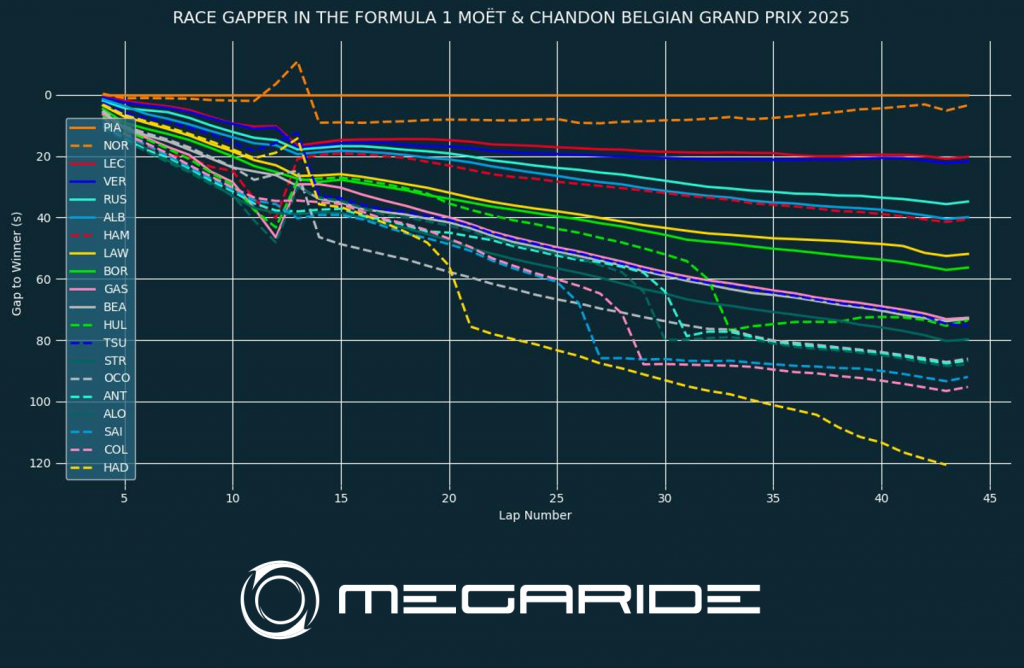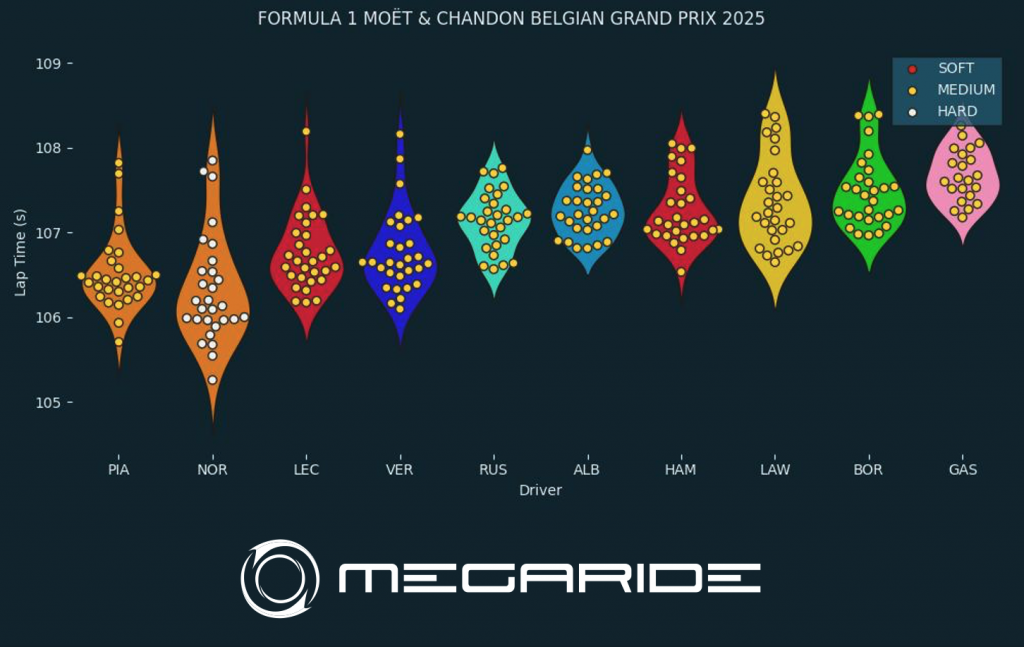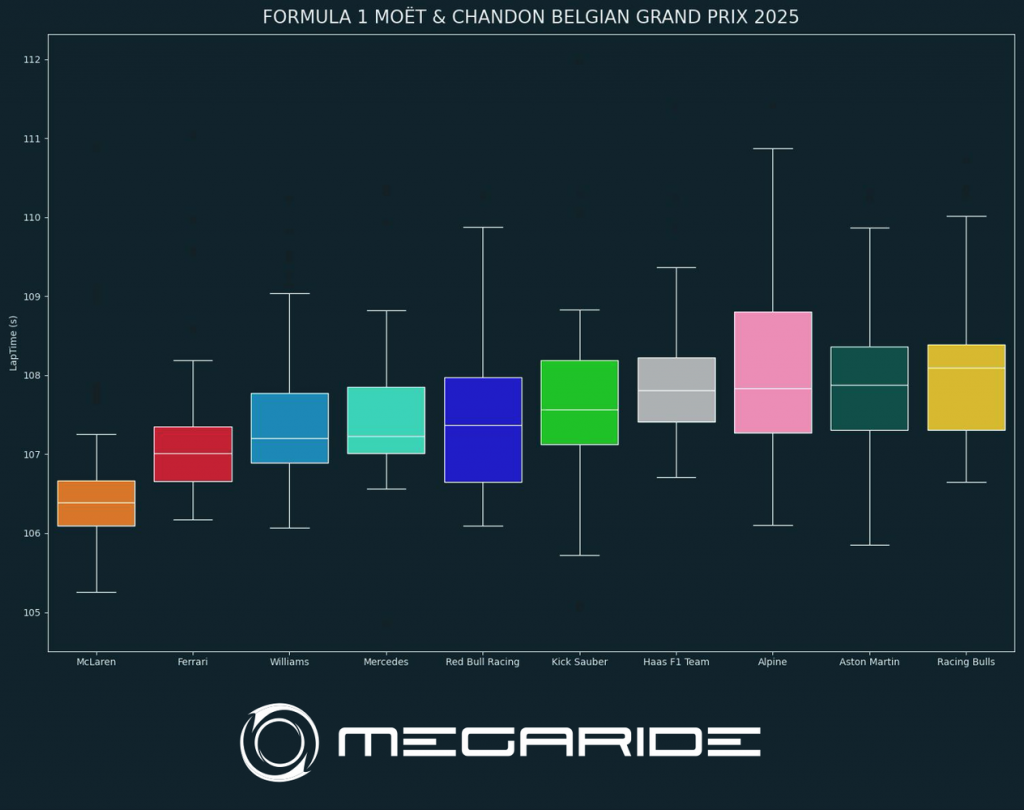
General overview
Yet another one-two finish for McLaren this season, confirming its status as the team to beat on the Belgian track. Oscar Piastri triumphed, skillfully exploiting the safety car start to launch a decisive attack on his teammate Norris in the early stages. It was an effective maneuver that allowed him to maintain the lead until the finish line. Charles Leclerc also finished on the podium after a solid race. The Monegasque driver had to watch his back for most of the race from a Max Verstappen who was never really incisive: Red Bull paid the price for choosing a high downforce setup, designed to deal with wet conditions that never materialized. Many teams had opted for a rain setup, trusting the forecasts. However, race control postponed the start by over an hour, a decision considered by many to be overly cautious.

The race started with a rolling start on an almost dry track, and after only five or six laps, the drivers switched to slick tires. The standings remained the same as in recent races: McLaren clearly in the lead, Ferrari in second place, and an excellent Williams, especially with Albon, who earned a valuable points finish. Mercedes and Red Bull struggled more, hampered by the subpar performance of their second drivers. Analyzing the data, the violin graph clearly shows the superior race pace of Norris, who was busy throughout the race trying to catch up with Piastri. However, a few small mistakes slowed him down, preventing him from making a serious attack. The race was almost a carbon copy for Leclerc and Verstappen, with virtually identical lap times.

Race strategy
On the strategic front, there was little margin for maneuver: everyone started on intermediates, then switched to slicks shortly after the tenth lap. Among the leaders, only Norris chose the hardest compound (C1), as opposed to the C3 used by the others. This decision had a minor impact, as almost everyone managed to finish the race with a single pit stop, even with the medium compound.
Focus on drivers’ lap times
Looking at the fuel-corrected lap times and race gapper charts, it is clear that the pace in the second stint was very similar among the top four. Leclerc and Verstappen maintained a steady pace, slightly slower than Piastri, who intelligently managed his accumulated margin. Norris, on the other hand, pushed harder, proving slightly faster but unable to close the gap.

Conclusions
Like the Sprint, the main race did not provide any particular excitement. Expectations for a wet race were dashed, partly due to extremely cautious race management, which preferred to avoid the risk of a wet start, probably for reasons of visibility and safety. The result was an orderly race, but one lacking in real drama. Now all eyes are on Hungary, the last stop before the summer break: a narrow and twisty circuit where thermal degradation could play an important role and where, historically, overtaking is rare.